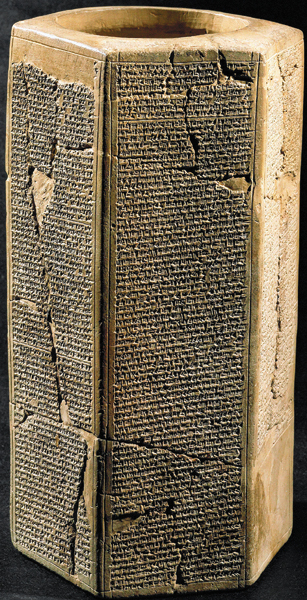Shapely Documents
Sidebar to: Israelites in Exile
The ancient Assyrians and their Sumerian and Babylonian forerunners placed inscriptions on all sorts of objects—palace walls, stelae, statues, throne bases and the sides of mountains. However, the most popular material for writing was clay, which was inexpensive and easy to impress when wet. Clay documents produced in ancient Mesopotamia include not only flat tablets (which could be square or oblong, the size of a postage stamp or over 3 feet high), but also documents in unusual shapes: hollow cylinders, cones and multi-sided prisms. Why did the Assyrians create these three-dimensional inscribed objects? Were the shapes chosen arbitrarily, or did each have a special significance?

Some of the variations in shape can be attributed to practicality. Neo-Assyrian grain loan contracts (tenth-seventh centuries B.C.E.), for example, were often inscribed on triangular tablets; when stored in archives, their shape would have helped differentiate them from other types of contracts, like loans of silver, that were written on rectangular tablets. Although prisms, cones and cylinders were practical in some respects (they had more surface area to be inscribed than tablets and were less likely to break), the main rationale for creating them seems to have been commemorative and/or religious. Many of these objects were deposited in the foundations of palaces, temples or gateways, where they were hidden from the gaze of all except posterity and the gods.
Already a library member? Log in here.
Institution user? Log in with your IP address.

